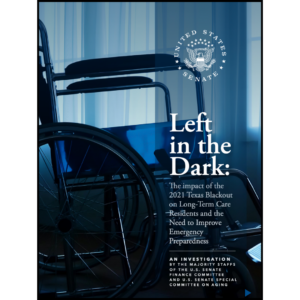Business continuity planning starts with safety at home
Businesses and organizations of all types including long-term care communities are focusing on business continuity planning to help ensure that their entity remains viable during a crisis. Planning for unexpected events like fire, natural disaster or a national emergency must be a priority for every facility. The question is, where does an organization start with such an endeavor? I submit that planning for an emergency must start at home so your organization can help protect one of its most valuable resources. Of course, that resource is your employees and their families.
Safety doesn’t happen by accident. Individuals and families need to incorporate a level of emergency preparedness into their lifestyles that is reasonable and sensible. While most of us live in communities that provide excellent emergency response services, an important fact that must be acknowledged is that the first few moments of a potential emergency situation are crucial. Most citizens feel that they have plenty of time to react to an emergency situation and truly believe that a crisis or disaster will never happen to them. When the unimaginable does occur, the unprepared will face serious challenges. A little bit of thought given to personal safety planning can pay huge dividends during an emergent event.
Let’s focus on a common peril that occurs in the home. Fires happen in the home at an alarming rate in the U.S. Statistics reveal that approximately 3,000 Americans die in the place that they are most familiar with each year—their own homes. Residential fires contribute to billions of dollars of loss in the U.S. annually. The majority of these deaths and associated injuries are completely preventable providing that occupants make sure that they utilize safe practices and protect themselves with smoke detectors. Fires in the home typically start from unattended cooking, improper use of candles, smoking, electrical hazards and poor housekeeping practices. By controlling and eliminating potential hazards in the home, the chance of a fire is greatly reduced. Additionally, the presence of an operating smoke detector on each level of a residence will significantly increase chances of survival during a fire. Here are some tips:
- Never leave candles burning unattended.
- Make sure that your smoke detector always has a fresh battery.
- Test your smoke detector battery weekly and change it twice per year.
- Do not overload electrical outlets.
- Maintain orderly storage throughout your home, especially in your garage and attic.
- Keep your stove and oven clean.
- Supervise cooking at all times; never leave the house with something cooking on the stove or baking in the oven.
- Establish an emergency escape plan for your home.
- Establish a pre-designated meeting area outside of the home for all to meet following evacuation.
- Ensure that fire safety is part of your daily routine.
As the world continues to confront national security threats both foreign and domestic as well as the constant threat of natural disaster, it is essential that individuals and family units have contingency plans in place to deal with a potential disaster scenario. People need to plan for emergencies by making sure that family members have multiple ways to communicate during a crisis. If you are at work and something happens that may have serious consequences like an earthquake, tornado, terror attack or similar adverse event, you will need to have a plan in place to communicate with your family. It is essential that individuals and families plan for the unexpected. Here are a few more tips:
- Make sure that you have access to essential phone numbers at work.
- Make sure that you have access to essential phone numbers at home.
- Don’t rely on numbers stored in your cell phone as the system may be down during a disaster; maintain a written record of important phone numbers and always have the list with you.
- Provide family members with access to multiple forms of communication (cell phones, e-mail address, social media, etc.) during a potential crisis.
- Develop a system of checking in with other family members, especially during times of potential crisis (storms, wildfires, elevated terror levels, etc.)
- Have extra water available in sealed containers. The Federal Emergency Management Agency (FEMA) recommends a supply of one gallon of water per person per day for three days. Example: A family of three should have 9 gallons of drinking water available in the home for emergency use.
- Have non-perishable food items available at all times. It is recommended that these items be low in salt, higher in sugar and protein to provide energy and sealed for freshness.
- Keep a good supply of flashlights and spare batteries in the home.
- Develop a meeting place away from the home (a friend or other family member’s home) to meet in case of an emergency that doesn’t require you to return to your home or neighborhood.
If your organization robustly promotes personal preparedness so individual employees have a plan for fire safety and emergency preparedness at home they will be in a better position to serve your organization by avoiding a personal crisis at home as well as being prepared during a disaster.
For more information about personal disaster planning, visit www.ready.gov.

Stan Szpytek is the president of consulting firm Fire and Life Safety, Inc., in Mesa, Arizona, and is the Life Safety/Disaster Planning Consultant for the Arizona Health Care Association and California Association of Health Facilities. Szpytek is a former deputy fire chief and fire marshal with more than 35 years of experience in life safety compliance and emergency preparedness. For more information, visit www.emallianceusa.com or email Szpytek at Firemarshal10@aol.com.
Related Articles
Topics: Disaster Preparedness , Facility management , Operations











